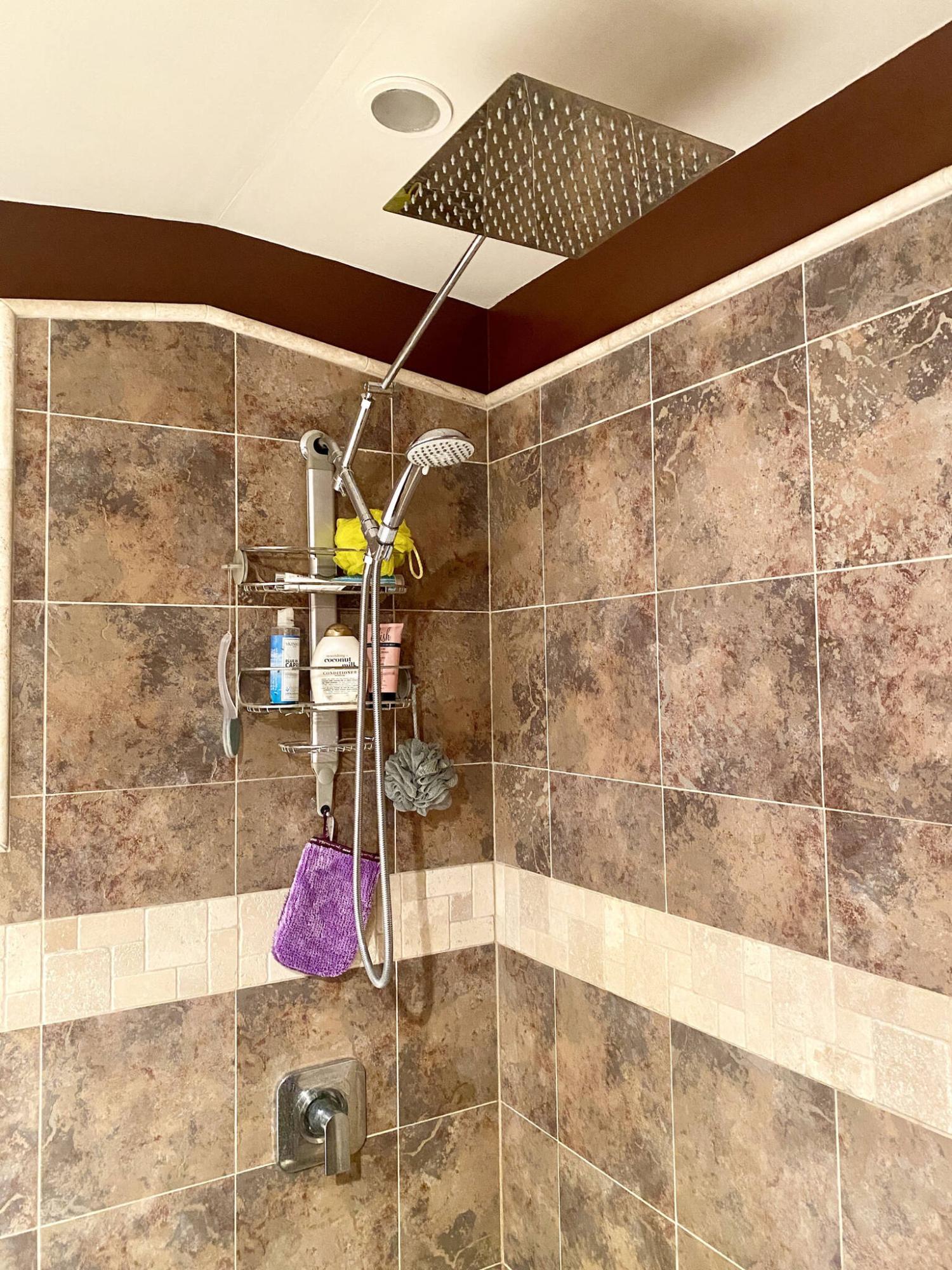
Marc LaBossiere / Free Press
The old shower head is replaced by a double-head array, made up of elements sourced individually.
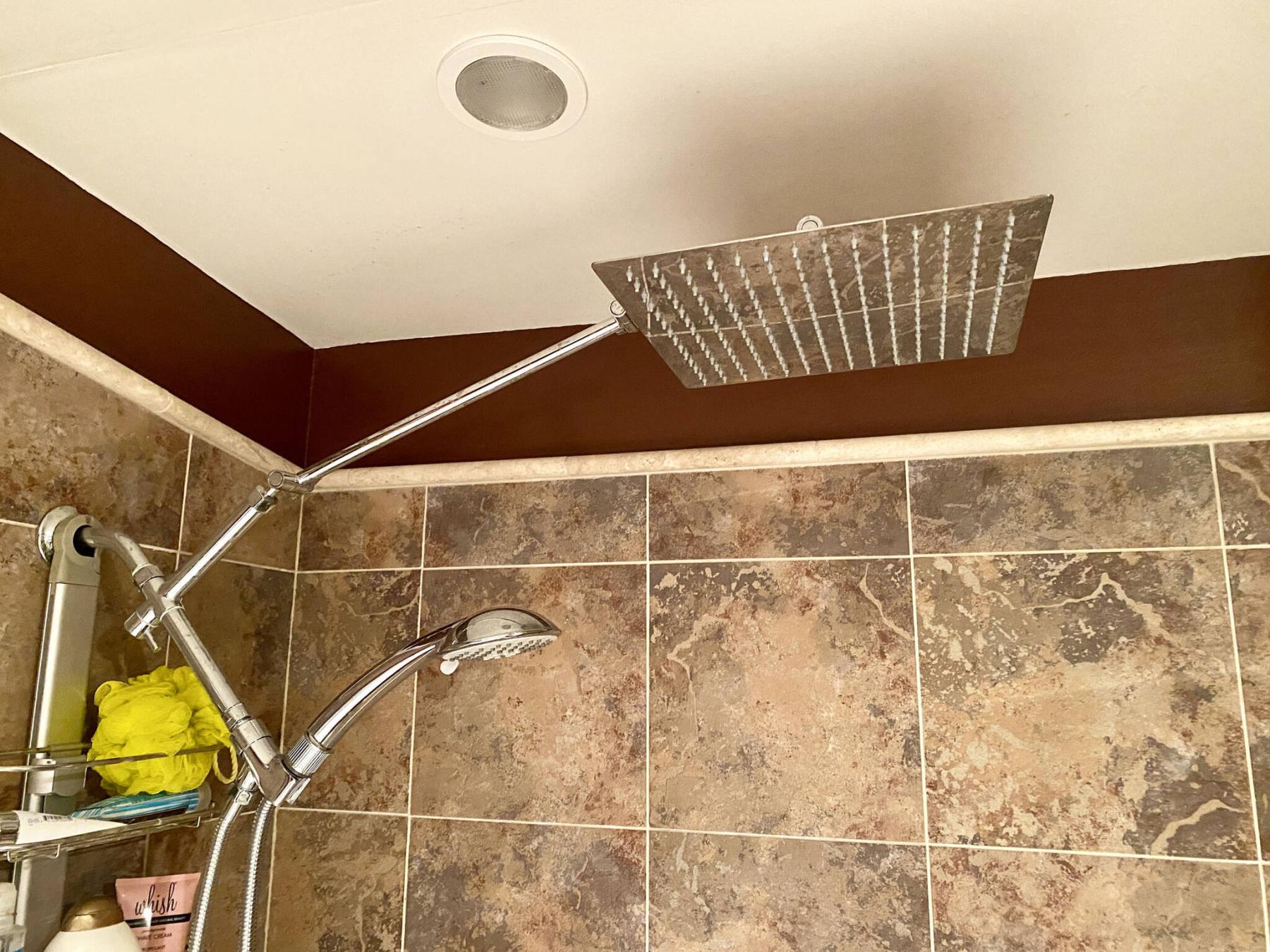
Marc LaBossiere / Free Press
A 16-inch rainfall shower head is installed above a multi-flow shower head that doubles as a hand wand.
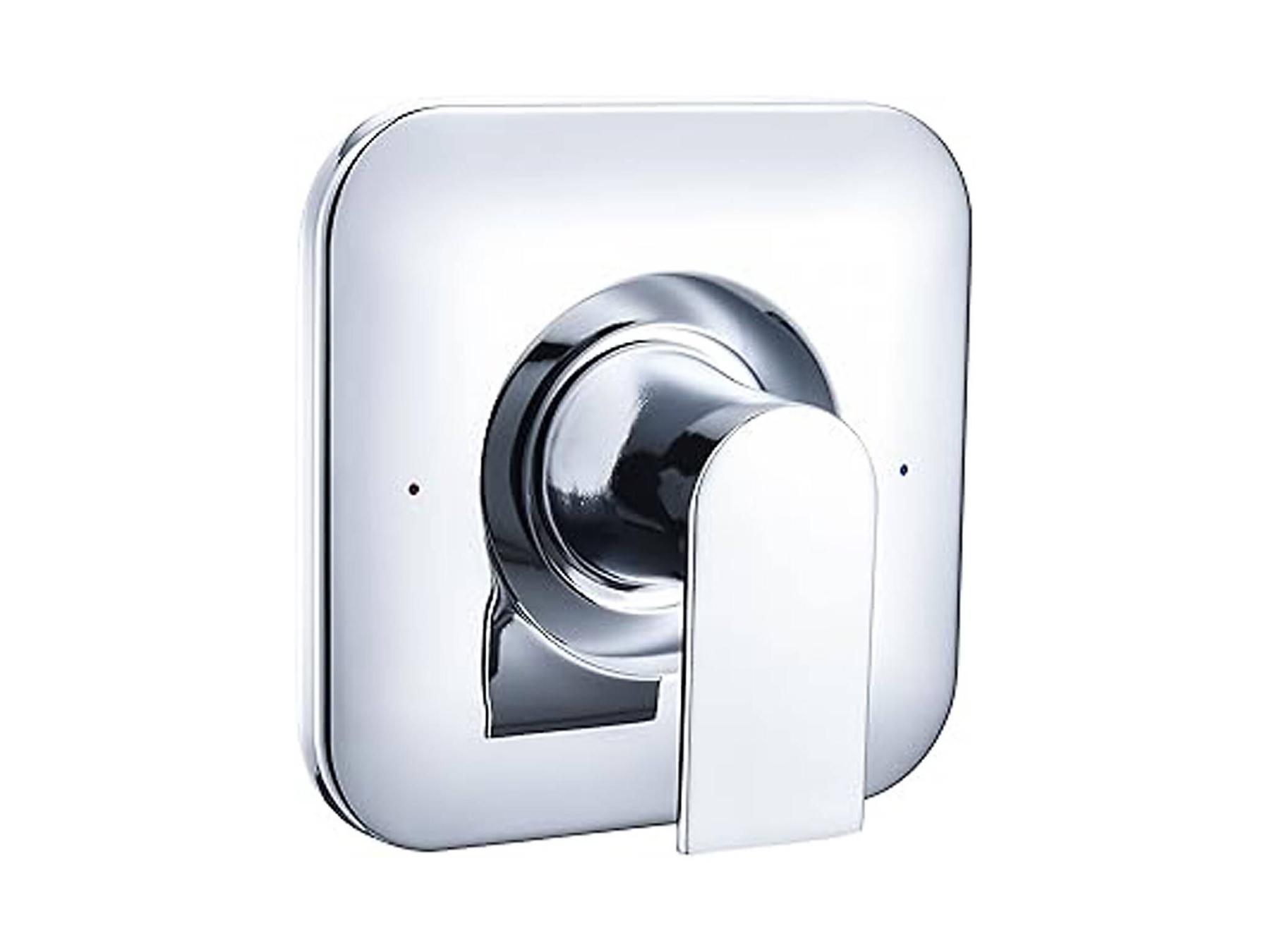
Marc LaBossiere / Free Press
A square Moen trim plate with rounded corners and sleek handle replaces the old and worn-out trim and handle original to the bathroom.
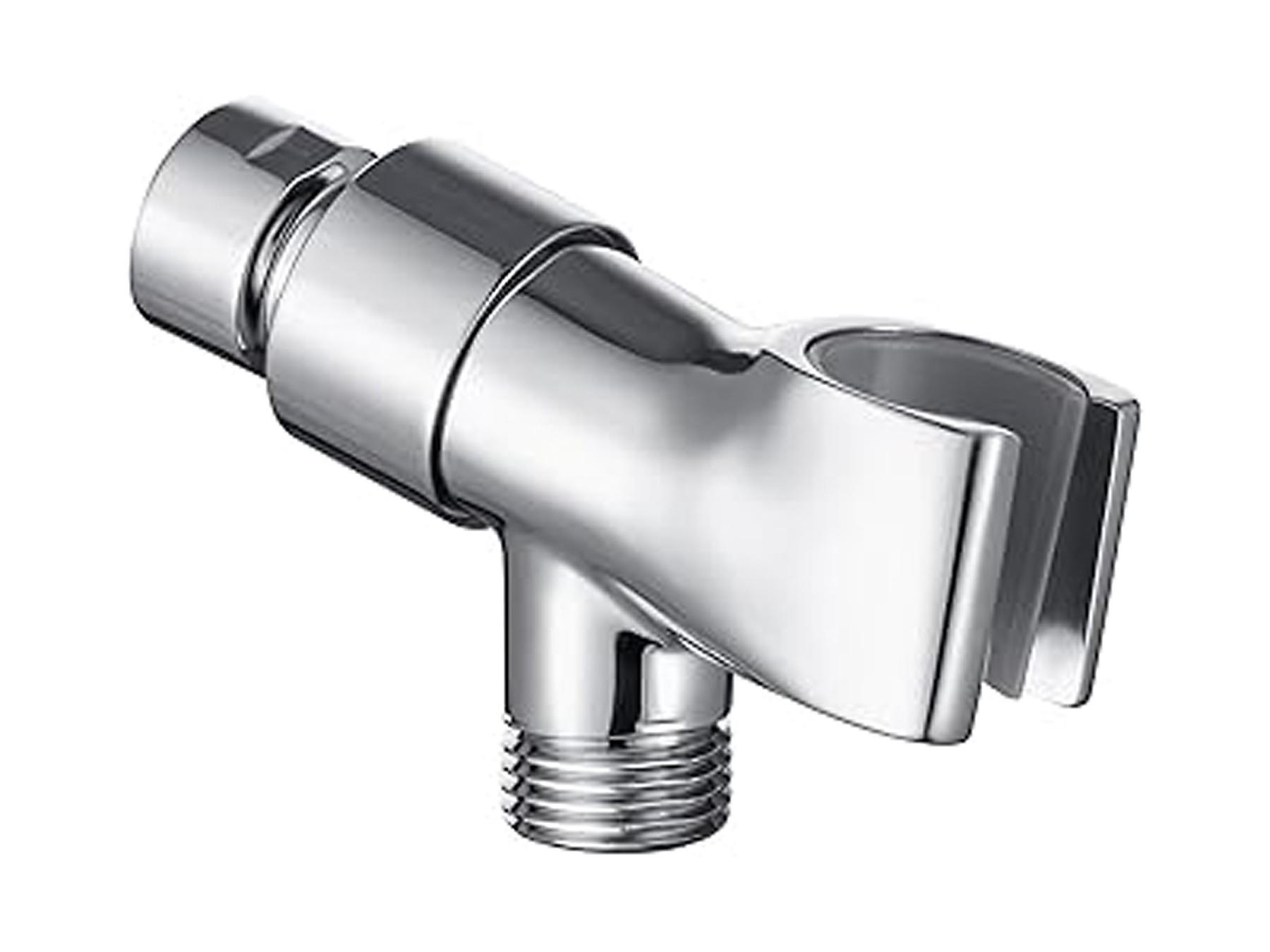
Marc LaBossiere / Free Press
A metal shower-head holder is always advisable — plastic options can quickly fail.
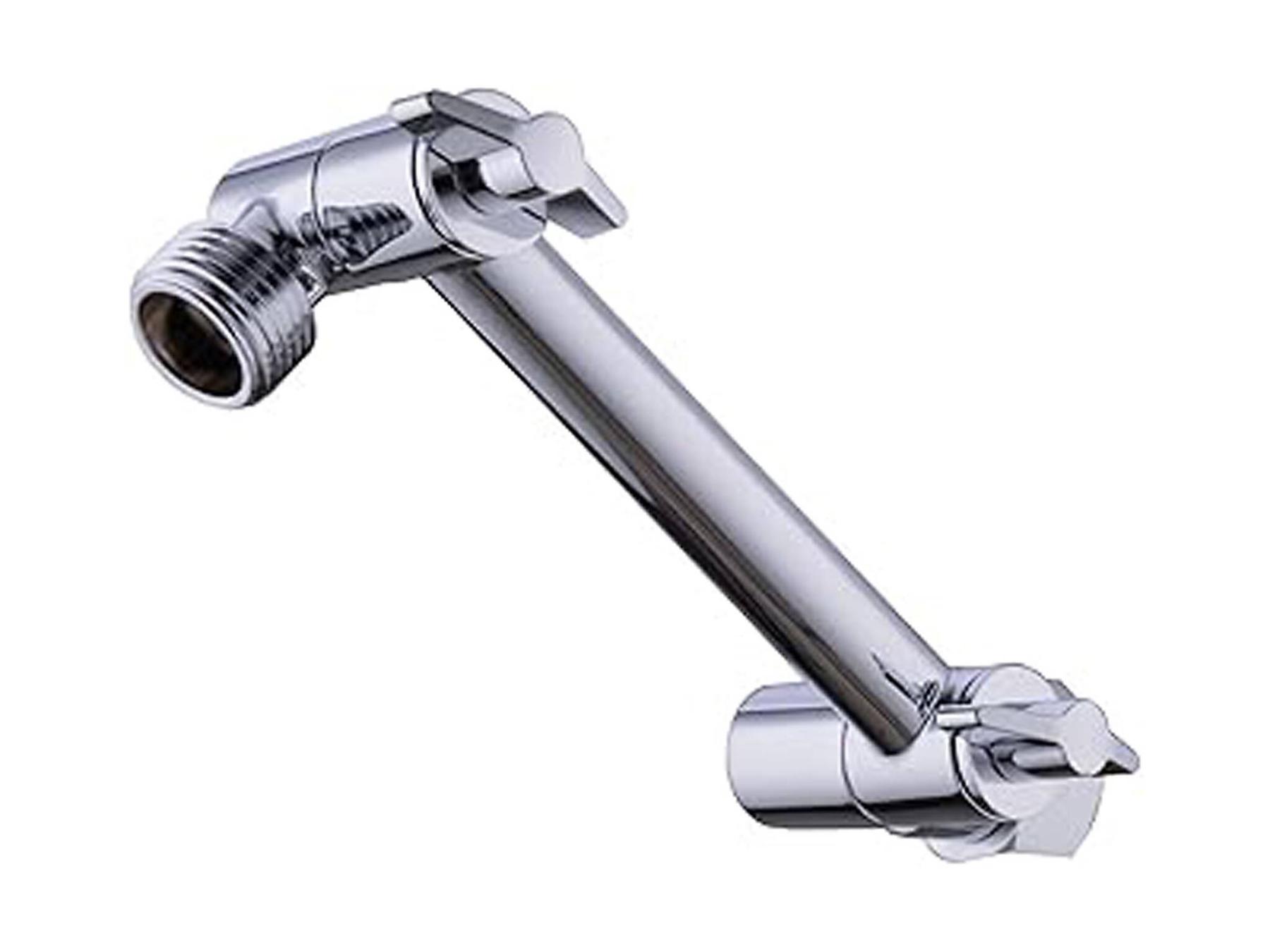
Marc LaBossiere / Free Press
Shower-head arms are useful to create distance when installing an array of shower heads.
For homeowners looking to upgrade the water features of a shower stall without need for an invasive approach, the simplest tactic is to swap out the shower head for something new. While this is attractive to most looking for a change, there’s so much more that can be done if you know where to do your research and piece it all together.
The main shower stall in my house has been in operation since 2005. Due to the hardness of our artesian well water and despite use of water softener, shower heads in this house usually last for about five years before they begin to get clogged up with sediments and particulates. After soaking the shower head in a solution of diluted CLR, the individual holes usually provide a renewed flow. However, the process usually indicates it will soon be time to replace the head completely. Beyond shower-head flow issues, the shower faucet handle and trim plate can also show wear and tear.
In lieu of simply replacing the shower head this time, I began hunting for parts and elements that would greatly improve the shower experience. My research proved quite fruitful at Amazon.ca. So here’s what I did to renew our main shower stall, without having to break through tile or bust down any walls.
The first upgrade includes a full replacement of the shower faucet handle and trim plate. After searching Moen’s website, several options came up. Although many of the styles were compatible, I settled for a streamlined chrome handle with flat front, along with a square trim plate design with rounded corners. In a shower stall with square tiles, it seemed to be a complementary choice, instead of the circular trim plate that had been installed initially. Once the old handle and plate were removed, the new accessories mounted very easily, as they cater to most Moen brand faucet-housing assemblies.
The shower-head replacement would allow wider search opportunities, as most (if not all) shower heads mount on a three-quarter-inch threaded male stem that protrudes from the wall, which itself is threaded into a female fitting soldered to the copper pipe from the faucet assembly inside the wall cavity behind the tile.
With this in mind, I began hunting for several items: a rainfall shower head, a separate shower head that could double as a hand-wand and appropriate elements allowing installation so both would function without interfering with one another when in use. This meant an extension arm would be required to bump out the rainfall shower head, which would of course be installed at a higher elevation, allowing for the other shower-head (and hand-wand) mount below, closer to the standard shower head placement.
After an exhaustive search, I located the required parts for my intended shower array. Directly from the male-threaded arm protruding from the wall, a chrome-coloured brass diverter was attached to direct the flow of water to either the rainfall head or hand-wand with the flip of a lever.
Along the high side, an 18-inch chrome extension arm is attached, with the rainfall shower head on the other end. Both the arm and head arm adjusted to meet the desired height and angles. At the bottom side of the diverter, a short chrome-coated brass stem is introduced to provide a gap between the upper extension arm and the top of the hand-wand head for ease of use.
At the end of the stem, a chrome-coloured brass shower-head holder is threaded and tightened at a conducive angle. The hand-wand hose is then threaded, and the wand is placed into its holder.
The hand-wand shower head features six different flow-rate settings and serves as the main shower head. The ability to remove this shower head from its holder provides great convenience as a hand wand when the need arises. At the flip of the lever on the diverter, the 16-inch rainfall shower head is activated, allowing a steady stream of soothing water flow, which soaks the entire area when standing directly below it. All fittings are sealed with rubber washers and a generous amount of thread-seal tape before being tightened until no leaks are visible with full water pressure engaged.
This shower-head array is truly the best of all worlds, without having to remove any tile or breach the wall to access the existing shower-faucet assembly. Although the latter is always advised when renovating a bathroom shower stall from scratch, the external approach is the better solution for a mild facelift and can render a utilitarian upgrade while also sprucing up the overall look of things.
Not all bathroom upgrades need to be costly, especially when a more economical approach achieves the desired result. I’ve never enjoyed the rain so much.
RenoBoss.Inc@outlook.com



